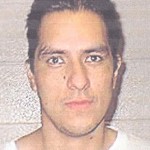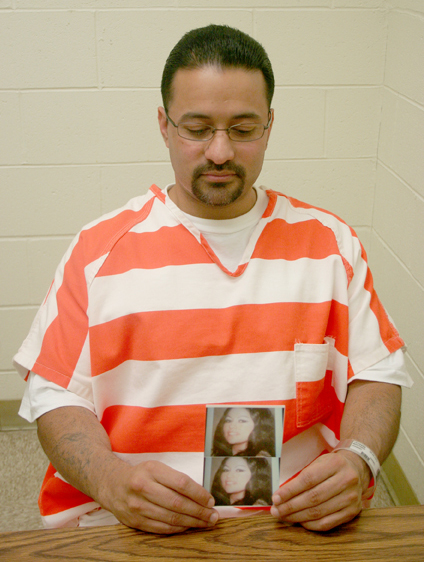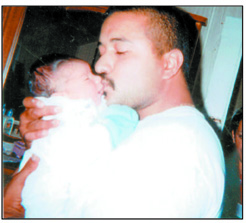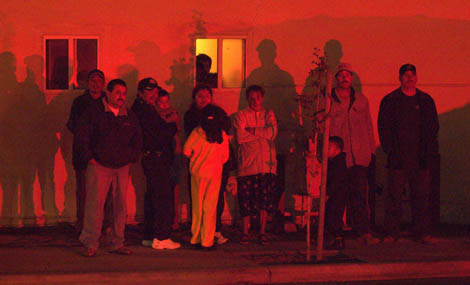Reasonable Doubt: A 43-year-old Seaside cold case comes to a conflicting end
DA dismisses charges, but man’s name not cleared
~
~
Read the original version of this story here.
By JULIA REYNOLDS
Herald Staff Writer
Sunday, February 24, 2013
The Seaside murder of Christian Lopes was for 40 years a case buried in the annals of the city’s police department even as it lived on in the hearts and minds of his family.
It was the kind of killing some residents say police chose to overlook in those days — the death of a young black male during a brawl in the projects.
But the 1969 stabbing of Lopes and the prosecution 40 years later of a man who had been at the scene is more than that. It’s a case that raises troubling questions about police procedures decades ago, the practicalities of investigating long-cold cases and the ethics of pushing for a conviction when dealing with fading memories and shades of ambiguity.
It’s also a story of stubborn heroics and clashing versions of history that will likely never be reconciled.
Last week, the oldest cold case prosecuted in Monterey County, perhaps in the state, came grinding to a halt when the District Attorney’s Office announced it was dropping murder charges after another suspect came forward and “implicated himself” in the death of Lopes.
Sixty-one-year-old James Terry Mason was home in Dallas when he got the news. He would no longer be tried for murder.
After three years of anxiety, deteriorating health and mounting interstate travel bills, Mason’s family was elated it was over.
Then the rest of it sunk in. Why weren’t police arresting the new suspect? Why wasn’t Mason’s name cleared on the news? Where was the exoneration he had waited for?
“When do I get my name back?” Mason asked his attorneys.
It wasn’t a question they could answer.

James Mason, left, talks with attorney Michael Herro in a Salinas courtroom on Dec. 17, 2010. Charges have been dropped against Mason in a cold case murder from 1969. (HERALD FILE)
A foreign experience
From Mason’s point of view, his ordeal began anew with a knock on the door in October 2010. He was at home in Texas when two Seaside police officers asked to come in and chat.
The Army vet was surprised, though he’d spoken to one of them earlier on the phone.
“It was, ‘Thank you for serving our country, oh we think you’re a murderer. We’ve got an eyewitness,'” Mason says.
By that night, he was sitting in a small van, his wrists and ankles in chains, riding in the dark beside shackled strangers headed for jails in other states.
It was a completely foreign experience, even for a man who had lived around the world and witnessed the fall of the Berlin Wall.
“I’ve never been arrested. I don’t know the law because I don’t break the law,” he says. “I don’t know what lawyers do outside of TV.”
Mason was born in Texas but grew up in Seaside and Monterey. His father owned a Seaside liquor store and, at one point, a business delivering chickens to Peninsula restaurants.
Mason says he worked in his father’s store in an area around Broadway Avenue and Noche Buena Street known as The Pit.
For Seaside’s teen boys, it was a time of “big old Afros,” afternoons spent shooting pool, chasing the opposite sex and, of course, getting into fights, he says.
“The gang that hung there was called the Pit Boys,” he says. “But I wasn’t in no gang. I worked in the store. I always had a job and was chasing the girls.”
Seaside was a long-faded memory the night the police came calling in 2010.
Mason left the city when he was drafted into the Army after high school.
“The Army sent me to Berlin, New York and Seattle. I was in Berlin behind the Iron Curtain in the ’70s, during the time of those terrorist groups at the Olympics. I was working for the government over there,” he says. “The wall went down and I was sitting pretty. They kept me over in Europe for 25 years.”
He married, divorced, and then his ex ran off with his 8-year-old son. He put all his effort into searching for the boy, he says, but gave up trying when the money ran out.
By 1998, he settled back in Texas, where he eventually met a new girl and bought a house with her near Dallas. Always enterprising like his late father, he says, he has held a number of jobs, including working on and off for a Texas state representative.
A few years back, he beat prostate cancer.
Friends have visited from all over the world, he says — Spain, Germany, South Africa.
All in all, it wasn’t a bad life.
But then he was crossing the Southwest in the night, shackled and facing murder charges.
“Chained up, no socks, in short pants and a T-shirt,” he says.
He suffers from hypertension and diabetes and says he tried several times to convince the officers he needed medication as the van stopped to pick up more suspects along the way.
“They said I went into shock. I woke up in a hospital in Arizona,” he says. “The guards got me chained up to the bed.”
Eventually, he was delivered in poor health to Monterey County Jail, where, he says, he tried to keep to himself. Some of the inmates, however, wanted to make a hero out of him, saying things like, “Man, you beat the system for 40 years!”
Mason rebuffed the supposed compliments. He didn’t see it that way at all.
In late 2007, Nicholas Borges, now 31, was a young Seaside patrol cop. Back then he wasn’t a detective or a homicide investigator. He wasn’t even part of the recently formed cold case squad that was digging into unsolved Peninsula murders.
But he liked to remind himself he was a human being like anyone else, a fact that made it easy for him to connect with suspects.
“I treat them with respect and sometimes they open up,” he says.
After one “minor arrest,” he says, he chatted up the perp, a Seaside old-timer who had been around a few blocks. The subject of old murders came up, as did the name of Chris Lopes.
Borges had never heard of the guy.
“I remember all the old veterans of the department discussing cold cases and I didn’t recall that one being one of them,” he says. “The case basically didn’t exist.”
He went to the investigations unit, where he looked over a shelf full of thick files on unsolved murders. He didn’t see the Lopes case there. None of the department’s 20-year veterans even recalled the name.

Seaside police Sgt. Nicholas Borges reopened the cold case murder of Christian Lopes. (PHOTO / BORGES FAMILY)
‘Very thin folder’
“Almost by accident, we found a very, very thin folder with the name Christian Lopes on it,” he says. That was the day his life changed.
“This was probably the biggest thing that ever happened to me,” Borges says.
He knew what he was up against. This had to be the oldest cold case in the county, and there wasn’t much at all in that old file to work with.
“This was one of the first killings that shocked Seaside. And I’m going back 40 years later and trying to talk to people with the ‘code of the streets,'” he says.
The slim case file didn’t help. “Document-wise, it was a very short investigation,” he says.
The bare facts involved a party shortly before Christmas 1969 at Del Monte Manor apartments — “the projects” — with more than 40 youngsters in attendance. Several fights broke out that night. The melee spilled outside and Lopes collapsed in the middle of a parking lot after he was stabbed through the neck, his carotid artery severed.
More than dozen people saw Lopes bleed out.
A Seaside officer named Marvin Dike had worked the case.
Borges was intrigued, but his pursuit didn’t kick into high gear until January 2008, when an officer was preparing to take a report from a woman whose last name was Lopes.
“It’s not a name that I heard that much,” Borges says, and he decided to tag along.
When the other officer’s questioning was done, Borges asked one of his own. “Are you guys familiar with Chris Lopes?”
He says the woman broke into tears, and her next words gave him chills.
“She said, ‘I’ve been waiting almost 40 years for a cop to ask me that.'”
She turned out to be Christian Lopes’ sister.
The woman recalled friends from those days, gave him names, but sometimes Borges would locate a witness only to learn the guy had died a few years earlier.
“I knew there was an urgency,” he says. The pathologist who performed Lopes’ autopsy was one witness Borges “missed by a few years.”
Then there was missing evidence. He asked a few old-timers at the police department why the items had been lost or destroyed.
“They said if it was done, it was a mistake,” he says. “There were some things that would have been helpful for me today.”
Early into the brief investigation in 1969, police received an anonymous tip telling them to look on the apartment roof for the murder knife. Officers found a folding “lettuce knife” there. According to testimony by Dike some 40 years later, a lab determined it had blood on it.
But the knife disappeared by the time Borges took the case.
The interviews in the file were a hodge-podge of contradictions: Some witnesses Dike interviewed blamed Mason for the killing; others blamed another man known today as “Witness 2.” Only one man said he saw Mason holding a knife, but he said he knocked it out of his hands. Others at the scene were reported as holding knives, too. Most importantly, no one said they actually saw anyone stab Lopes.
According to police reports now in the court record, officers interviewed Witness 2’s mother the day after the slaying. She said her son had gone to visit his father in Los Angeles, but she didn’t have an address. She did, however, hand police the clothing her son had worn home from the party. Officers noted it was torn and spotted with blood.
For unknown reasons, there is no record of police ever trying to track down the son. And at some point, the blood-stained clothing also disappeared.
One of the few records that did survive was a report of an interview with Mason, who voluntarily went to police the morning after the stabbing.
“My father, me and my brother, we walked into the police station and we said, ‘We heard, and we’re here,'” Mason says.
He told police that as the fighting progressed, he grabbed a knife from his brother’s car and began swinging it wildly in self-defense, according to the report.
He knew he was one of two suspects in the case.
And then the questioning was over.
In fact, the entire active investigation appears to have lasted about three weeks, according to court documents.
Mason admits he is cynical as to the reason the case was set aside.
“Back in them days, if a black man died, he just died,” he says. “Who ever heard of investigating a murder for three weeks and then dropping it?”
Mason had been planning to go to Chico State that fall, but police asked him to stay in the area. Finally, he was drafted into the Army, but still, no one came calling.
There is no record Witness 2 was ever contacted.
The years passed.
Borges says it isn’t clear why the homicide appears to have been entirely forgotten for four decades.
“I don’t know why it wasn’t looked at before it was. Maybe officers looked at the file and said, ‘Impossible,'” he says. He says his own thought was, “Maybe these witnesses have evolved and want to tell you what happened. People change.”
Within two years of reopening the case, it was one of those witnesses, a man named Charles Lee Carr Jr., 61, who gave Borges what he had been hoping for: an eyewitness account of the slaying.
Carr, who enlisted in the Marines the day after the slaying and returned to Seaside in the 1990s, said in several interviews he saw Mason stab Lopes in the back of the neck.
Borges tracked down Mason’s older brother, who gave him Mason’s cellphone number.
It was time to head to Texas.
Case dismissed
Mason had been in Monterey County Jail for two months when his preliminary hearing was held in December 2010.
After four decades and years of retirement, Officer Dike appeared on the stand, lucid and articulate. Carr, however, was another matter.
By the hearing’s end, Judge Larry Hayes noted contradictions in Carr’s testimony and said he did not find him at all credible, “not so much from the question of honesty, but perhaps the passage of time.”
Hayes ruled there was insufficient evidence to hold Mason on a charge of murder, but ordered him to face trial on a manslaughter charge.
The District Attorney’s Office immediately filed paperwork reinstating the murder charge.
Mason’s bail was lowered from $1 million to $20,000, and in July 2011, after nine months in jail, he went home to Texas to await his day in court.
He says his health worsened and he underwent a heart bypass operation while his attorneys, the father and son team of Fred and Mike Herro, fought for a dismissal.
The Herros’ motion, made on grounds the case was so old and witnesses so sparse that Mason couldn’t reasonably defend himself, eventually made it before Judge Russell Scott, who said he would decide the question after Mason’s trial.
Fred Herro was stunned by the ruling. “Why subject somebody to that?” he says.
Trial was set for Feb. 4 of this year, and Mason waited to return to California. He knew once he left Texas, he might never come home.
Then the unexpected happened.
Last September, Witness 2, the other top suspect from long ago, walked into the Seaside police station. Borges had interviewed him a few times earlier. Life hadn’t been kind to the man. His health was even frailer than Mason’s because he had been the victim of a robbery and was beaten in the head and set on fire. He suffered from several serious illnesses.
In a rambling, conflicting statement to police, Witness 2 implicated others in the slaying before also indicating he stabbed Lopes, and that he threw the knife on the apartment roof.
It wasn’t a clear-cut confession, but it was enough to cast more doubt on Carr’s already shaky testimony, and Borges dutifully sent the tape and transcript to the district attorney.
When prosecutor Meredith Sillman learned that Witness 2 had come forward with another version of the murder, she was stunned. “Shocking would probably be the right word,” she says.
Soon she had to make her own phone calls.
She told the Lopes family it was over.
“It was a hard conversation to have with them,” she says. “It’s one of the hardest things for a DA, or a defense attorney, to have those conversations with a family.”
Borges says he was disappointed upon hearing the news, but felt some comfort after speaking with the Lopes siblings and other relatives with whom he has stayed in contact throughout the case.
“I feel good that the family has peace of mind in this case. They have answers now that they waited 40 years for,” he says.
“We did our job.”
Borges still believes Carr told the truth and that he had the right man.
Currently a sergeant, Borges’ goal is to become a detective sergeant.
“There’s a lot of cold cases that I’d love to investigate,” he says. “There’s a lot of people out there waiting like the Lopes family for some answers.”
The Herros say Sillman did the right thing by dismissing the case, an act they say took integrity.
On Friday, two days after publicly announcing the case was dismissed, Sillman reflected on its meaning.
“It brought me back to our ethical responsibilities and making tough calls,” she says. “It’s one thing to try to push this case to trial, to say, ‘We’re going to let the jury decide.’ The lesson I learned is that’s not what we’re here for.
“I have this contradictory evidence and I run the risk of convicting an innocent person. I need to say, ‘There is a reasonable doubt. We’re not going to go further. We need to do the hard call that’s not always easy to do.’
“It’s not easy to tell the family. It’s not easy to tell the investigating officer who’s invested years of his life.”
Ultimately, Sillman says, the lesson wasn’t about winning, but about justice.
“This is the type of case that really does show that the system works,” she says. “When you have hard-working, ethical people on all sides, I think the system works.”
Clearing his name
Mason believes he knows why Witness 2 was moved to speak up after so many years.
“Do you think the man up in heaven was looking down on me, to have the same person they looked at 40 years ago come forward?” he asks, still reeling from the news.
Last week, he went from preparing to fly back to California and battle in court for his life to wondering what to do next.
Because he hasn’t been officially exonerated, his lawyers say he has little hope of suing to recoup his costs. Although he was represented by a public defender, he is still amassing bills connected to the case. Even the ambulance company that took him to the Arizona hospital is trying to make him pay up, he says.
What he cares most about now is regaining his health and his name.
“They still believe (I did it). That hurts,” he says. “I don’t want to be remembered as being some guy who murdered somebody. I can’t change anybody’s opinion of me, but people have been living for 40 years with some awful thoughts. Now I just want them to hear the facts, the truth.”
He says he is nothing if not a fighter.
“I’m high spirit, high energy. The man up above, I know he has some purpose for me.”









